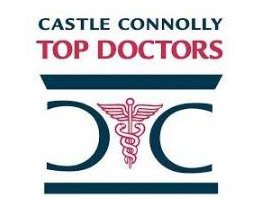The spine consists of the backbone, a column of bones called vertebrae that are stacked one on top of the other. This vertebral column protects the spinal cord. The spinal cord is where the body’s nerves are rooted. The spinal cord acts like an information superhighway for messages from the body to travel, via the nerves, to and from the brain. When the spinal or vertebral column gets narrow, it can put pressure on the spinal cord and the nearby nerves. This condition is called spinal stenosis. (Stenosis means “narrowing.”)
What you should know about spinal stenosis
- About 400,000 Americans have lumbar spinal stenosis, that is, spinal stenosis of the lower back.
- Surgery for spinal stenosis is the most common surgery in Americans over age 60.
- Spinal stenosis can occur at any point along the spine but is most common in the lower back.
- Most at risk for spinal stenosis are people over the age of 50.
- Spinal stenosis can be a serious condition. Contact University Spine Center at once if you have pain, numbness or weakness in your back, legs, neck or arms.
Causes of spinal stenosis
There are many things that can cause spinal stenosis. Several of them are related to the aging process and are, thus, more common in older people.
- Osteoarthritis
- Disc degeneration
- Thickened ligaments
However, spinal stenosis can also be caused by:
- Spinal injuries or accidents
- Paget’s disease of the bone (abnormally rapid bone growth)
- Acondroplasia (a genetic disorder resulting in dwarfism)
- Spinal tumors
Symptoms of spinal stenosis
Some people may show evidence of spinal stenosis on an X-ray but have no symptoms. On the other hand, sometimes symptoms of spinal stenosis are severe. Typical symptoms include:
- Numbness or weakness, particularly of the leg, foot, arm or hand. There may also be sensations of tingling or “pins and needles.”
- Dropping things more often than usual.
- Tendency to fall or be unsteady walking.
- Pain in the back, typically in the lower spine or neck region.
- Cramping of the legs, particularly when standing or walking for prolonged periods.
If you have cervical spinal stenosis, you may also have neck pain or shoulder pain.
In the most severe cases, there may be loss of bladder or bowel control, weakness and even paralysis. If these symptoms occur, seek medical care at once.
Diagnosing spinal stenosis
University Spine Center has helped many people with spinal stenosis and can assist you in getting an accurate diagnosis. During your physical examination, you may be asked to sit, stand, walk, bend or lift your legs as the University Spine Center physician assesses your condition. You may also undergo:
- A reflex test (with the rubber hammer)
- Sensory tests with a pin or feather to test your perception
- An X-ray of the spine
- Spinal imaging using a CT scanner or MRI scanner
- Other tests that can help us pinpoint the problem
Treatment of spinal stenosis
The physicians at University Spine Center will discuss the most appropriate treatment options for you. This may include drug therapy, physical therapy, exercise and steroid injections. In some cases, surgery may be appropriate.






